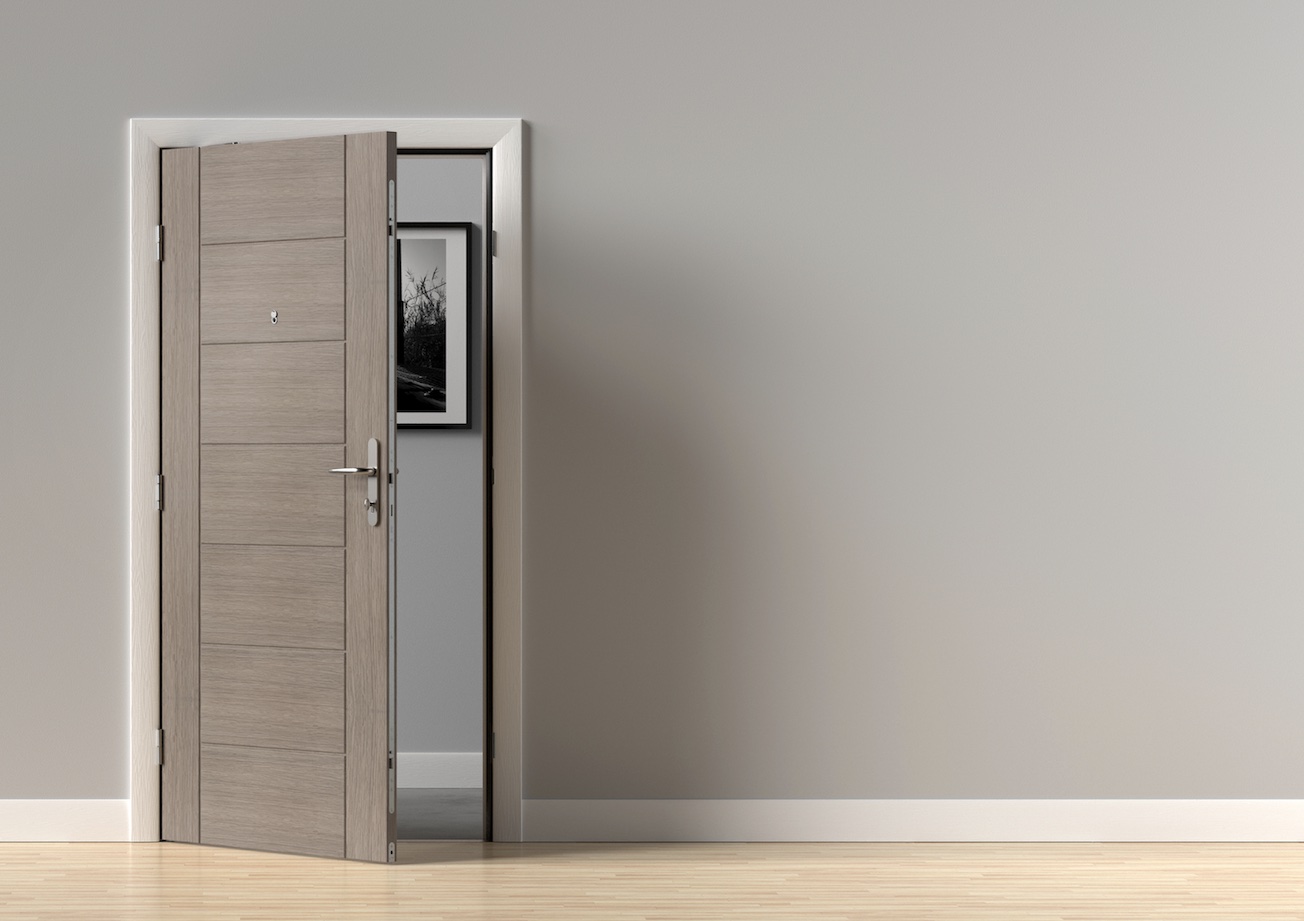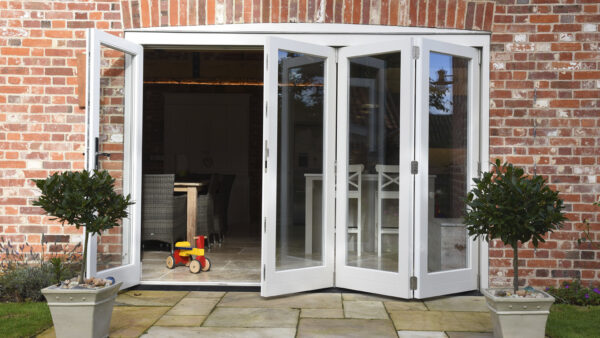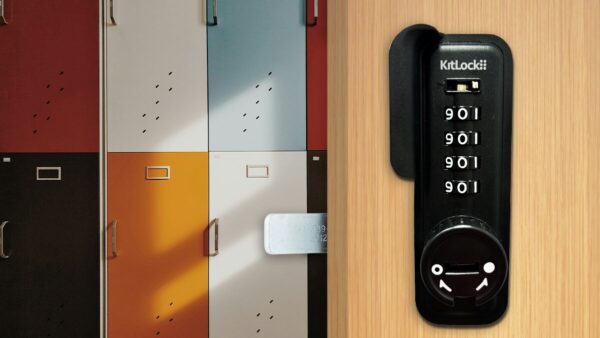When specifying fire doors for the entrances of residential apartments, there are two key elements to consider: fire protection and security. Only when the door provides excellent safety features and robust protection against burglary is it performing its primary role.
Here is an overview of those two considerations, as well as why style must also be high on your list of priorities.
Fire protection – the top priority
The first and most important consideration is fire protection. Any fire door must be installed with the correct and compatible components, which will be detailed on door leaf’s fire certificate. These will be fire tested and include the door leaf, door frame or lining, intumescent seals, smoke seals, hinges, latch or lock and door closers.
All fire doors should be tested to either BS 476 22 or BS EN1634-1. It is also important that the ironmongery used has also been through the same tests and the door material and fitting methods are the same. Ordering a door as a doorset means that one team is in charge of what can be a confusing minefield and can assess any
conflicting information.
Equally important, the door should include intumescent fire and smoke seals. These should be in a good condition, fit the full length of the door and be secure in the groove. If possible, they should also be fitted in one continuous length.
Robust security
As the first barrier to the outside world, apartment entrance fire doors should provide formidable protection against burglars. This means they must be fitted with robust security hardware that has met the requirements of recognised security certifications.
In England and Wales, new builds require entrance doorsets to have met the security requirements of PAS 24, the standard designed to assess the security of the doorset against the effects of an opportunistic burglar. Either that or they are required to have a stipulated level of security as dictated in Approved Document Q. Also look out for lock cylinders that have been certified with the TS007:2014 standard – ideally with the highest three-star rating. This means they will provide maximum security against known attack methods such as cylinder snapping and lock manipulation.
Style – the secret ingredient
While fire doors are traditionally seen as more functional than attractive, style is a major consideration when it comes to living spaces. After all, no one wants an unsightly door in their home.
There are various options available that provide a range of styles for maximum elegance and integration into the home. Many of these offer the ability to customise various parts of the door depending on requirements, such as the handle, the viewer and the intumescent seals.
For example, XL Joinery’s new PAS24-accredited Simpli Advanced® range combines high-grade, FSC-certified oak wood with fire and security hardware from ASSA ABLOY. This enables the doors – which are available as either FD30S or FD60S – to deliver formidable smoke and fire resistance while visually enhancing any living environment.
When choosing apartment entrance fire doors, make sure they offer high-class fire protection, strong security and an attractive design that you would be happy to have in your own home. With all three of these things in place, you cannot go wrong.
Report by Mark Kilbride, technical manager at XL Joinery.

FIRE DOORS 101
Fire doors are a really important element of your fire safety strategy. If a fire door has appropriate fire test evidence, is properly made by a BWF certified manufacturer, with compatible parts, and certified by an accredited third party, it should hold back a fire for 30 minutes or more. They are a legal requirement for flats which open onto communal areas shared with other tenants. This is to make sure crucial escape routes are protected if a fire breaks out.
The components of a door – hinges, seals, handles and glazing – are as important as the door itself. This is because, in a fire, doors can warp, move and allow smoke and fire through the opening. The seals and the gaps between the door frame and the wall are really vital too. They also stop smoke and fire spreading as quickly. Also make sure you have appropriate door closure mechanisms – the wrong ‘closers’ can physically damage frames and hinges through slamming, as well as causing injury to the people who use the doors.
Modern doors are equipped with what’s called intumescent strips and cold smoke seals. Older ‘notional’ doors may not have these fitted, and are often fitted into frames with a 1 inch or 25 mm door stop. The ‘notional’ door may be suitable in place if it is not warped or gapped to the extent that it requires replacement, its replacement will be a modern style fire door. Where doors are replaced that are required to be fire resisting they should not be replaced by ordinary doors and the person replacing the door should ensure that the door is a fire door.
Source: London Fire Brigade








